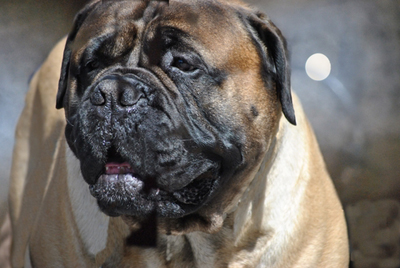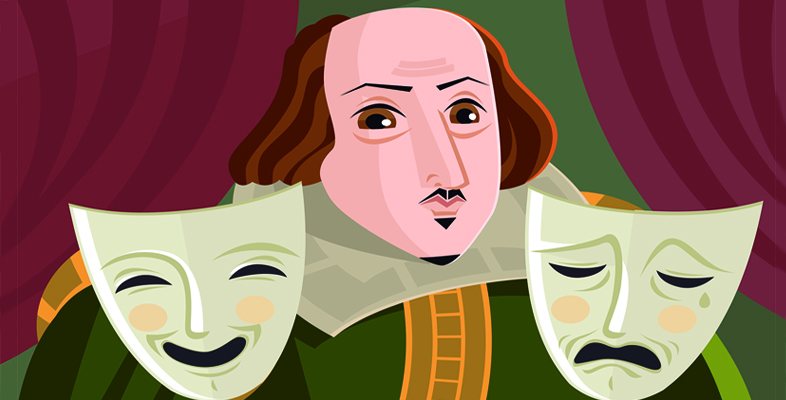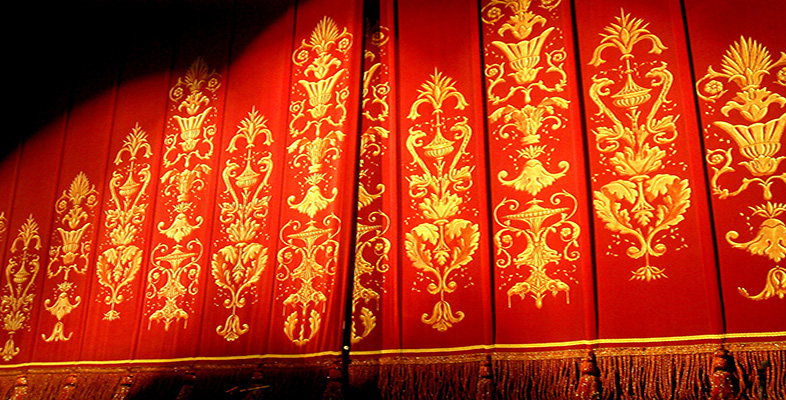 A modern-day English Mastiff
A modern-day English Mastiff
References to dogs in the work of Shakespeare and his contemporaries are frequent and diverse in character; many are to be found in arresting contexts bound up with displays of power and informal, ruthless responses to the poor. From the early Tudor morality play Magnificence (1520-22), in which Poverty complains, ‘I am baited with dogs at every man’s gate’, through to the closing of the theatres in 1642, drama of all kinds consistently represented dogs as a cruel feature of the lives of the poor.
From the 1590s dogs help describe and criticise a harsh, new world. Gardiner in Thomas Lord Cromwell (c.1599-1602) cites the threatening of the poor by dogs as an indirect consequence of the Reformation. Once there were institutions ‘. . . where religious men should take them in, / [the poor] Shall now be kept back with a mastiff dog’. Dogs were also a means of describing the men who thrived in this new world. In Middleton’s A Trick to Catch the Old One (1605-6), the First Creditor, on hearing of the apprehension of the Witgood, rejoices, ‘It warms me at the heart; I love a’life to see dogs upon men’. Dogs could be a part of arguments about the origins of poverty itself. In The Pedlar’s Prophecy (printed 1595) the fate of the Landlord is to ‘play Actaeon’s part’ and be hunted by his own dogs. ‘What will your raised rents help? / When you shall be torn of every whelp’ he is asked.
Most mentions of the poor’s encounters with dogs that name a specific breed refer to mastiffs, the dogs employed in bull and bear baiting. Theatregoers may well, therefore, have witnessed or heard first-hand accounts of their ferocity in the very surroundings in which they watched plays that referred to them. Falkner, ‘a ruffian’ in Sir Thomas More (1590s) swears, ‘’Sblood, if all the dogs in Paris Garden hung at my tail, I’d shake them off . . .’. Paris Garden was London’s popular Bear Garden.
Edgar, in his Poor Tom guise in King Lear (1605) actually recites a list of the breeds of dogs which he has had some trouble with. Ultimately, though, he has triumphed over them all, having ‘. . . a semblance / That very dogs disdained . . . ‘. Less shocking but witty and darkly humorous, Jonson, in The Alchemist (1610), has Subtle refer to dogs in his ‘mystical’ reading of the tobacconist Drugger’s name. The superstitious Drugger has sought advice as to the design of his shop sign so that it might attract a plentiful supply of customers. It should consist of the following images Subtle explains:
. . . one whose name is Dee,
In a rug gowne; there’s D and Rug; that’s Drug:
And, right anenst him, a Dog snarling Er;
There’s Drugger . . .
The irony is lost on no one except Drugger himself who does not pick up Subtles’s assessment of his business prospects, that he is to end up dressed like a beggar being threatened by a dog.
Other typical allusions occur elsewhere in Shakespeare. In Henry V (1599), as Henry arraigns the traitors Cambridge, Scroop and Grey, their treachery is thrown back at them and made to draw significance from the common casting of dogs.
. . . your own reasons turn into your bosoms,
As dogs upon their masters, worrying you.
See you, my princes and my noble peers,
These English monsters!
They are ‘monsters’ because they are like the dogs that have become so deeply associated with the cruel misuse of authority. The tragic history of the hero of Coriolanus (1607), described as ‘a very dog to the commonalty’, is marked by the failure of his relationship with the people of Rome most vividly represented in his treatment of the starving Citizens in a time of dearth.
Amazingly, performances of the period occasionally required the physical presence of dogs. Stephano and Trinculo, the drunken sailors in The Tempest (1611), after committing the typically vagrant crime of stealing clothes, are beset by ‘divers Spirits, in shape of dogs and hounds, hunting them about’; and in Shirley’s Triumph of Peace (1634), a masque performed before Charles I, beggars are ‘pursued by mastiffs that came barking after them’. Shirley’s work demonstrates the currency of dogs worrying the poor in images of society extending across the widest possible range of performance contexts.
In the world of plays there existed a consistent and relatively unified disquiet about treatment of the poor that related to broader questions of social and economic change – change that brought prosperity to some but suffering to others. The dog was an emblem of what was wrong with things, as it is in King Lear when Lear is brought face to face with the ‘Poor naked wretches . . .’, those subjects he has ‘. . . ta'en / Too little care of . . .’. As unique as Shakespeare’s presentation of his theme is, as a dramatist he also followed established conventions which were familiar to his audience; at the heart of this is the dog: ‘the great image of Authority’, the ‘farmer’s dog [that] bark[s] at a beggar’.



Rate and Review
Rate this article
Review this article
Log into OpenLearn to leave reviews and join in the conversation.
Article reviews